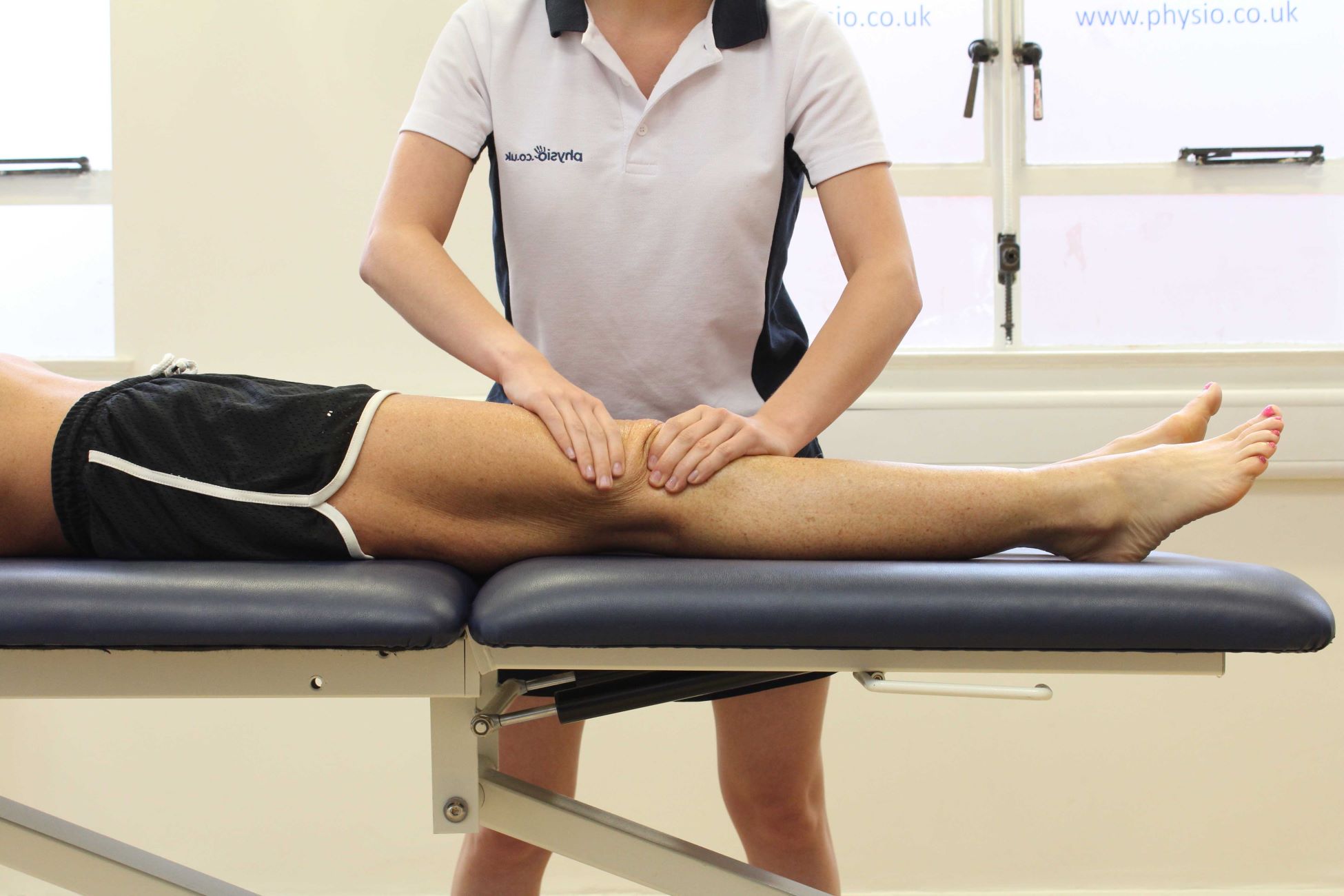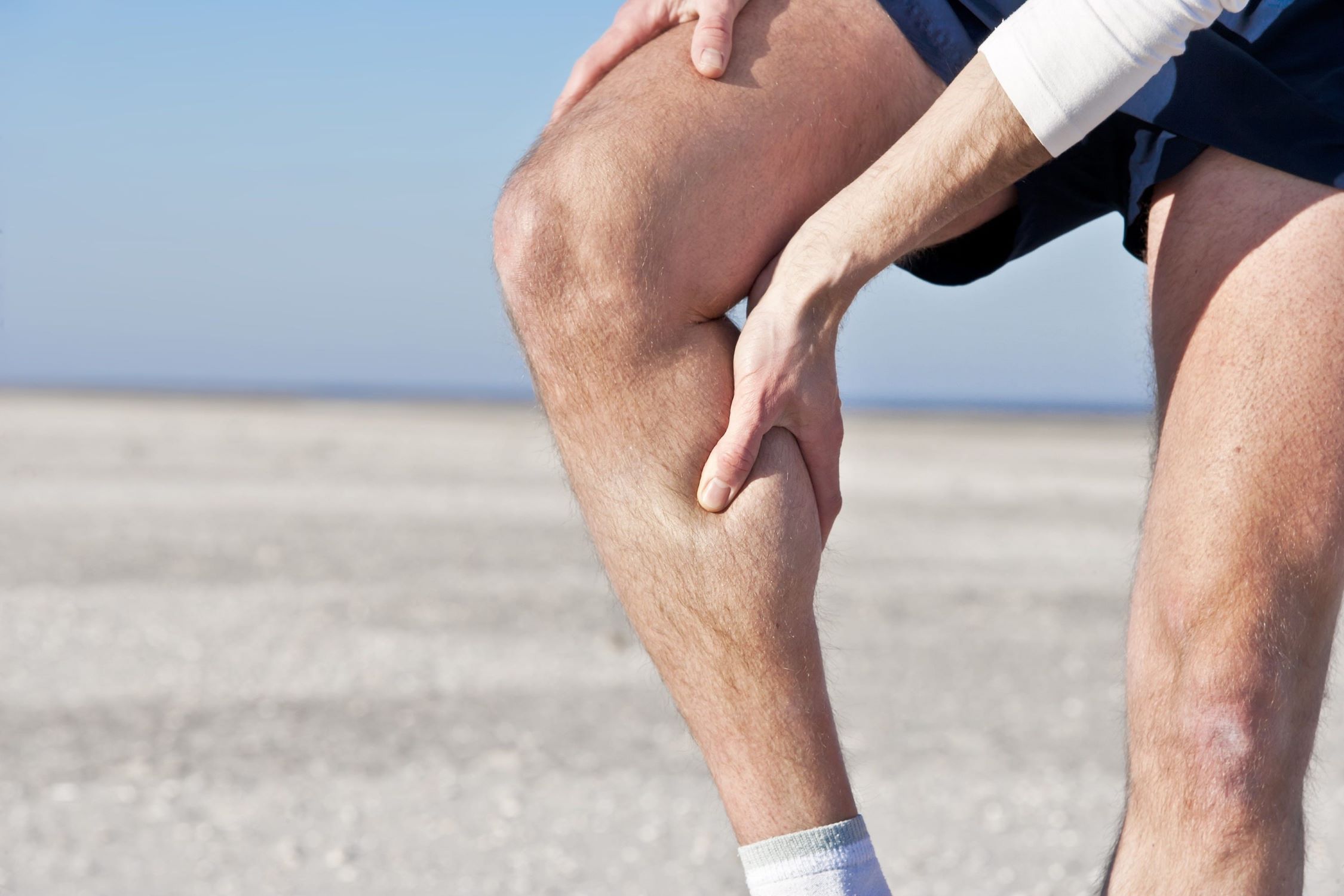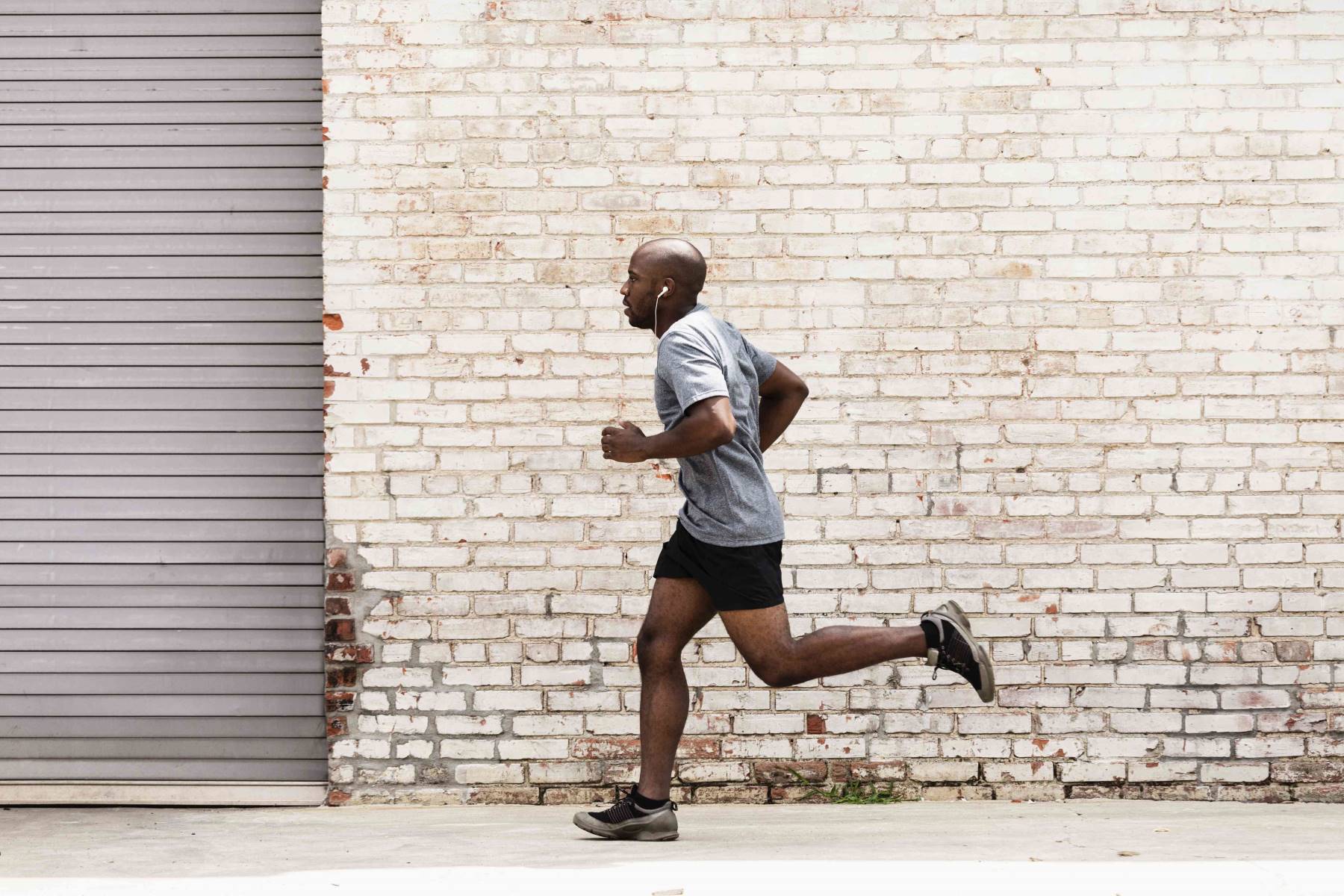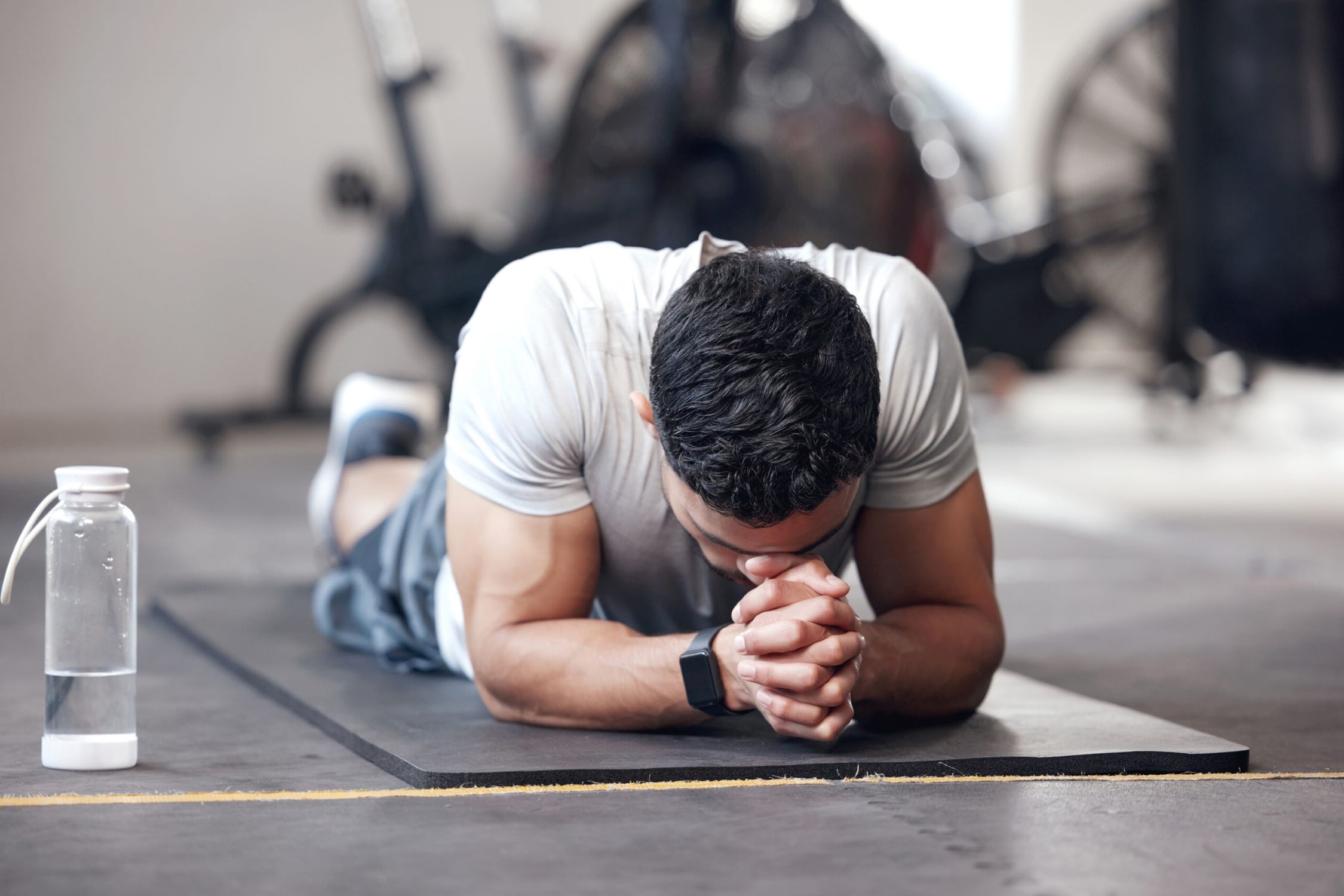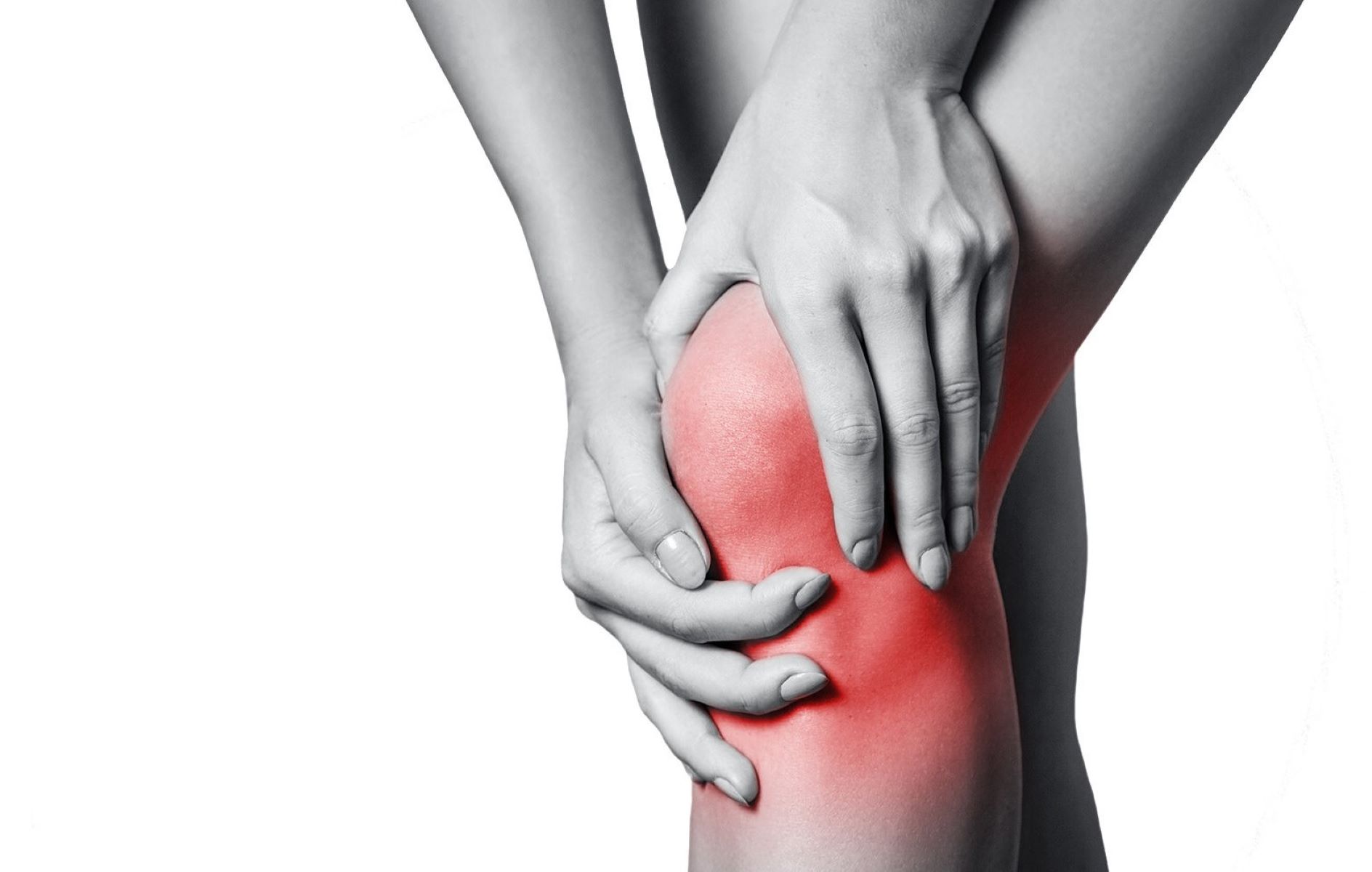Home>Health & Nutrition>Injury Prevention>Running: Understanding Adductor Injuries


Injury Prevention
Running: Understanding Adductor Injuries
Published: February 25, 2024
Learn how to prevent adductor injuries while running with our comprehensive guide. Discover effective strategies for injury prevention and stay on track with your training goals.
(Many of the links in this article redirect to a specific reviewed product. Your purchase of these products through affiliate links helps to generate commission for Therunningadvisor.com, at no extra cost. Learn more)
Table of Contents
Introduction
In the world of running, adductor injuries are a common concern for many athletes. These injuries can significantly impact a runner's performance and overall well-being. Understanding the intricacies of adductor muscles and the potential risks associated with their injuries is crucial for both seasoned and novice runners. This comprehensive guide aims to shed light on adductor injuries, including their anatomy, common causes, symptoms, diagnosis, treatment, rehabilitation, and most importantly, prevention strategies.
Adductor injuries can be particularly challenging for runners, as these muscles play a vital role in stabilizing the pelvis and facilitating proper leg movement during each stride. Whether you're a dedicated marathon runner or someone who enjoys a leisurely jog, the health of your adductor muscles directly influences your running experience. By delving into the details of adductor injuries, we can gain valuable insights into how to prevent and manage these issues effectively.
Throughout this guide, we will explore the intricate anatomy of the adductor muscles, pinpoint the common causes of adductor injuries in runners, delve into the symptoms and diagnosis of such injuries, and discuss the most effective treatment and rehabilitation methods. Furthermore, we will uncover practical strategies for preventing adductor injuries, empowering runners to safeguard their muscles and optimize their performance.
As we embark on this journey of understanding adductor injuries, it's essential to approach the topic with a proactive mindset. By equipping ourselves with knowledge and actionable insights, we can minimize the risk of adductor injuries and foster a sustainable running routine. Let's unravel the complexities of adductor injuries and pave the way for a healthier, more resilient running experience.
Read more: Understanding Overuse Injuries In Running
The Anatomy of the Adductor Muscles
The adductor muscles, also known as the hip adductors, are a group of muscles located on the inner thigh. These muscles play a pivotal role in the stabilization and movement of the hip joint, particularly during activities such as running. Understanding the intricate anatomy of the adductor muscles is essential for comprehending the potential vulnerabilities that can lead to injuries in runners.
The primary adductor muscles include the adductor longus, adductor brevis, adductor magnus, pectineus, and gracilis. These muscles work in harmony to facilitate movements such as bringing the legs together, a motion crucial for maintaining balance and propelling forward momentum during running. The adductor muscles are interconnected with the surrounding musculature and ligaments, forming a complex network that supports the structural integrity of the hip and pelvis.
During the running gait cycle, the adductor muscles are engaged to stabilize the pelvis and ensure proper alignment of the lower limbs. This function is particularly vital during the stance phase of running, where the body relies on the adductors to withstand the impact forces and maintain stability. Additionally, the adductor muscles contribute to the coordination and efficiency of leg movements, allowing runners to generate power and propel themselves forward with each stride.
The adductor muscles are susceptible to various types of injuries, including strains, tears, and overuse injuries, which can significantly hinder a runner's performance. Understanding the anatomical intricacies of these muscles provides valuable insights into the potential stress points and vulnerabilities that runners should be mindful of. By gaining a deeper understanding of the adductor muscles' anatomy, runners can proactively implement strategies to protect and strengthen these crucial muscles, thereby reducing the risk of injuries and optimizing their running experience.
In essence, the adductor muscles serve as integral components of the musculoskeletal system, contributing to the stability, coordination, and strength required for efficient running. By comprehending the intricate anatomy of the adductor muscles, runners can cultivate a heightened awareness of these essential structures, empowering them to take proactive measures to safeguard their adductors and sustain a healthy, injury-free running routine.
Common Causes of Adductor Injuries in Runners
Adductor injuries in runners can stem from a variety of factors, often arising from the repetitive and high-impact nature of running. Understanding the common causes of adductor injuries is crucial for runners to identify potential risk factors and take proactive measures to mitigate the likelihood of such injuries. Here are the primary factors that contribute to adductor injuries in runners:
-
Overuse and Training Errors: Engaging in excessive running without adequate rest and recovery can place undue stress on the adductor muscles, leading to overuse injuries. Additionally, sudden increases in training intensity or mileage without proper progression can strain the adductors, making them susceptible to injuries.
-
Poor Biomechanics and Running Form: Inefficient running mechanics, such as overstriding or inadequate hip stability, can place excessive strain on the adductor muscles. Improper foot strike patterns and inadequate pelvic control during running can contribute to imbalances and overloading of the adductors, increasing the risk of injuries.
-
Muscle Imbalances and Weakness: Weakness in the adductor muscles, often due to inadequate strength training or neglecting targeted exercises, can create imbalances within the lower body musculature. These imbalances can lead to compensatory movements during running, placing additional stress on the adductors and predisposing them to injuries.
-
Inadequate Warm-Up and Flexibility: Insufficient warm-up routines and inadequate flexibility in the hip and thigh muscles can limit the adductors' ability to adapt to the demands of running. Tightness in the adductor muscles, coupled with inadequate mobility, can increase the likelihood of strains and tears during running activities.
-
Sudden Changes in Terrain or Running Surface: Transitioning from a consistent running surface to uneven terrain or inclines can challenge the adductor muscles in new ways. Abrupt changes in running surface without gradual adaptation can strain the adductors, leading to injuries.
-
Inadequate Recovery and Rest: Failing to prioritize rest and recovery periods between running sessions can impede the adductors' ability to repair and adapt. Insufficient recovery time can perpetuate muscle fatigue and compromise the adductors' resilience, heightening the risk of injuries.
By recognizing these common causes of adductor injuries, runners can proactively address potential risk factors and implement preventive measures to safeguard their adductor muscles. Through targeted strength training, biomechanical assessments, and mindful running practices, runners can mitigate the likelihood of adductor injuries and foster a sustainable, injury-free running routine.
Symptoms and Diagnosis of Adductor Injuries
Adductor injuries can manifest through a spectrum of symptoms, each offering valuable insights into the nature and severity of the injury. Recognizing these symptoms and seeking timely diagnosis is crucial for effective management and rehabilitation. Here are the key symptoms and diagnostic considerations associated with adductor injuries in runners:
Symptoms:
-
Pain and Tenderness: The onset of adductor injuries is often accompanied by localized pain and tenderness along the inner thigh, specifically near the attachment points of the adductor muscles. This discomfort may intensify during activities that engage the adductors, such as running, sprinting, or lateral movements.
-
Swelling and Bruising: In more severe cases, swelling and bruising may develop in the affected area, indicating potential muscle tears or significant strain. The presence of swelling and discoloration signifies tissue damage and warrants immediate attention.
-
Limited Range of Motion: Adductor injuries can restrict the range of motion in the hip and groin region. Runners may experience difficulty in performing movements that involve bringing the legs together or spreading them apart, reflecting the compromised function of the adductor muscles.
-
Pain with Activity: Engaging in running or activities that recruit the adductor muscles can exacerbate the pain, causing discomfort and hindering performance. Persistent pain during running or sudden sharp pains may indicate underlying adductor issues.
Diagnosis:
-
Physical Examination: A thorough physical assessment by a healthcare professional can help pinpoint the specific areas of tenderness and identify any palpable abnormalities in the adductor muscles. The range of motion and strength of the adductors may also be evaluated during the examination.
-
Imaging Studies: In cases where the extent of the injury needs further clarification, imaging studies such as ultrasound or magnetic resonance imaging (MRI) may be employed to visualize the adductor muscles and assess the severity of any tears or structural damage.
-
Functional Testing: Functional movement assessments, including gait analysis and biomechanical evaluations, can provide valuable insights into how the adductor muscles contribute to a runner's movement patterns and identify any compensatory mechanisms that may contribute to the injury.
-
Diagnostic Injections: In some instances, diagnostic injections may be utilized to pinpoint the exact source of pain and confirm the involvement of the adductor muscles. These injections can aid in differentiating adductor-related pain from other potential sources of discomfort.
By recognizing the nuanced symptoms and pursuing a comprehensive diagnostic approach, runners can gain clarity on the nature of their adductor injuries, enabling them to embark on targeted treatment and rehabilitation strategies. Early diagnosis and intervention are pivotal in mitigating the impact of adductor injuries and facilitating a smooth recovery process.
Treatment and Rehabilitation for Adductor Injuries
Upon diagnosis of an adductor injury, implementing a comprehensive treatment and rehabilitation plan is paramount to facilitate healing, restore function, and prevent re-injury. The following strategies are instrumental in effectively managing adductor injuries in runners:
Immediate Rest and Ice:
Initiating immediate rest and applying ice to the affected area helps alleviate pain and reduce inflammation. Resting the injured adductor muscles minimizes further strain and promotes the initial stages of healing, while targeted icing aids in controlling swelling and mitigating discomfort.
Anti-Inflammatory Measures:
Nonsteroidal anti-inflammatory drugs (NSAIDs) may be recommended to manage pain and inflammation associated with adductor injuries. These medications can provide symptomatic relief, particularly during the early stages of injury management.
Physical Therapy and Rehabilitation Exercises:
Engaging in structured physical therapy sessions tailored to address adductor injuries is instrumental in promoting recovery. Physical therapists employ a range of exercises and modalities to strengthen the adductor muscles, improve flexibility, and restore optimal function. These may include targeted stretches, progressive strengthening exercises, and manual therapy techniques to address any associated muscle imbalances or compensations.
Gradual Return to Activity:
As the adductor muscles progress through the healing phase, a gradual return to running and other physical activities is carefully orchestrated. This phased approach allows the adductors to adapt to increasing demands while minimizing the risk of re-injury. Physical therapists and healthcare providers collaborate with runners to establish a structured return-to-running protocol, emphasizing gradual progression and monitoring for any signs of discomfort or limitations.
Biomechanical Assessment and Correction:
Addressing underlying biomechanical issues that contribute to adductor injuries is pivotal in preventing recurrence. Runners may undergo gait analysis and biomechanical assessments to identify any inefficiencies or imbalances that place undue stress on the adductor muscles. Implementing corrective measures, such as modifying running form, optimizing footwear, or incorporating targeted strength and stability exercises, can mitigate the risk of future adductor injuries.
Cross-Training and Conditioning:
During the rehabilitation phase, integrating cross-training activities that minimize impact on the adductor muscles can help maintain overall fitness and cardiovascular endurance. Low-impact exercises such as swimming, cycling, and elliptical training provide an avenue for maintaining conditioning while allowing the adductors to recover gradually.
Ongoing Monitoring and Maintenance:
Even as runners progress through rehabilitation, ongoing monitoring and maintenance of the adductor muscles are essential. Regular assessments by healthcare professionals and adherence to personalized strengthening and flexibility routines contribute to the long-term resilience of the adductors, reducing the likelihood of recurrent injuries.
By adhering to a comprehensive treatment and rehabilitation plan, runners can effectively navigate the recovery process, regain optimal adductor function, and fortify their musculature against future injuries. The integration of targeted interventions, personalized guidance, and a proactive approach to rehabilitation sets the stage for a successful recovery journey, empowering runners to return to their passion for running with confidence and resilience.
Preventing Adductor Injuries in Runners
Preventing adductor injuries is a proactive endeavor that encompasses a multifaceted approach, integrating targeted strategies to fortify the adductor muscles and mitigate potential risk factors. By implementing the following preventive measures, runners can safeguard their adductors and cultivate a resilient foundation for their running pursuits.
Comprehensive Strength Training:
Incorporating targeted strength training exercises that specifically engage the adductor muscles is pivotal for fortifying these crucial structures. Exercises such as side-lying leg lifts, seated hip adductions, and resistance band routines can bolster adductor strength, enhancing their capacity to withstand the demands of running.
Flexibility and Mobility Work:
Prioritizing flexibility and mobility exercises that encompass the hip and groin region is essential for maintaining optimal range of motion and suppleness in the adductor muscles. Dynamic stretching routines, yoga poses targeting the inner thighs, and foam rolling techniques can promote flexibility and mitigate the risk of adductor strains.
Progressive Training Progression:
Adopting a gradual and progressive approach to training, particularly when increasing mileage or intensity, is fundamental in preventing adductor injuries. Incremental adjustments to training loads allow the adductor muscles to adapt gradually, reducing the likelihood of overuse and strain.
Biomechanical Assessment and Correction:
Undergoing biomechanical assessments to evaluate running gait and lower limb alignment can uncover potential inefficiencies that contribute to adductor injuries. Addressing any biomechanical imbalances through corrective measures, such as gait modifications or orthotic interventions, can alleviate undue stress on the adductor muscles.
Proper Warm-Up and Cool-Down:
Prior to running, engaging in dynamic warm-up routines that activate the adductor muscles and prepare them for the impending activity is crucial. Similarly, incorporating thorough cool-down practices, including static stretching for the adductors, aids in promoting circulation and reducing post-run muscle tension.
Footwear and Running Surface Considerations:
Selecting appropriate footwear that provides adequate support and stability can influence the distribution of forces on the lower limbs, potentially alleviating strain on the adductor muscles. Additionally, varying running surfaces and terrain gradually allows the adductors to adapt to different challenges, reducing the risk of sudden overloading.
Cross-Training and Recovery Emphasis:
Integrating cross-training activities that complement running, such as swimming, cycling, or Pilates, offers a balanced approach to conditioning while minimizing repetitive stress on the adductor muscles. Emphasizing adequate recovery periods between running sessions is equally vital, allowing the adductors to recuperate and adapt to training stimuli effectively.
By embracing these preventive measures, runners can proactively fortify their adductor muscles, mitigate potential vulnerabilities, and foster a resilient foundation for their running endeavors. Cultivating a proactive mindset towards adductor injury prevention empowers runners to pursue their passion for running with confidence, knowing that they have taken proactive steps to safeguard their musculature and optimize their performance.
Conclusion
In the realm of running, the health and resilience of the adductor muscles hold profound significance, influencing not only performance but also the overall sustainability of a runner's journey. As we conclude this comprehensive exploration of adductor injuries in runners, it becomes evident that a proactive approach to understanding, preventing, and managing these injuries is paramount for fostering a resilient and injury-free running experience.
By delving into the intricate anatomy of the adductor muscles, we have gained valuable insights into the pivotal role these muscles play in stabilizing the pelvis and facilitating efficient leg movements during running. Understanding the nuanced interplay of the adductor muscles within the broader musculoskeletal framework empowers runners to cultivate a heightened awareness of these essential structures, laying the foundation for proactive injury prevention.
The identification of common causes of adductor injuries has shed light on the multifaceted factors that contribute to the vulnerability of these muscles. From overuse and training errors to biomechanical inefficiencies, each factor underscores the importance of targeted preventive measures and proactive interventions to mitigate the risk of adductor injuries.
Furthermore, the exploration of symptoms, diagnosis, treatment, and rehabilitation strategies has underscored the significance of early recognition and comprehensive management of adductor injuries. By embracing a holistic approach to treatment, including rest, physical therapy, and gradual return to activity, runners can navigate the recovery journey with resilience and confidence.
The preventive measures outlined in this guide serve as a proactive roadmap for runners, offering a multifaceted approach to fortifying the adductor muscles and mitigating potential risk factors. By integrating comprehensive strength training, flexibility work, and biomechanical assessments, runners can proactively safeguard their adductors, fostering a sustainable foundation for their running pursuits.
In essence, the journey of understanding adductor injuries in runners transcends mere awareness; it embodies a proactive commitment to nurturing the resilience and well-being of the adductor muscles. By embracing the insights and strategies presented in this guide, runners can embark on their running endeavors with confidence, knowing that they have equipped themselves with the knowledge and tools to safeguard their adductors and optimize their performance.
As we conclude this exploration, let us embrace a proactive mindset towards adductor injury prevention, recognizing that each step taken to fortify and protect the adductor muscles paves the way for a sustainable and fulfilling running experience.


